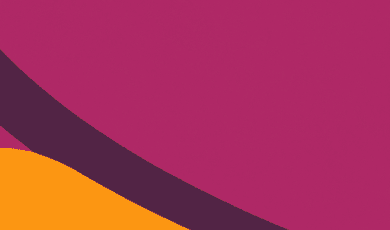
In today’s interconnected world, education and medical research are no longer confined by borders. Universities collaborate across continents, healthcare programs span multiple countries, and students participate in global exchange programs. As academic and medical institutions increasingly interact across linguistic and cultural boundaries, the ability to communicate effectively becomes not just a benefit, but a necessity.
One of the most critical—and often overlooked—aspects of international cooperation is the need for medical document translation. Accurate translation ensures that research findings, patient records, academic publications, and certification processes are accessible and comprehensible for all stakeholders. Without these services, invaluable research may remain siloed, and vital healthcare initiatives can be delayed or compromised. This blog post explores the essential role of professional translation in supporting international organizations, universities, and medical institutions, highlighting how certified translation services enable seamless cross-border academic and research pursuits.
The Role of Medical Document Translation in Education and International Collaboration
1. Expanding Access to Global Research and Academic Cooperation
The rise of multinational academic collaborations has transformed how knowledge is shared and advanced. Universities participate in joint research projects, exchange best practices, and accredit programs internationally. However, language diversity presents significant challenges in aligning curricula, publishing collaborative research, and ensuring mutual recognition of qualifications.
Medical document translation plays an indispensable role here. When research papers, case studies, and grant proposals are translated with precision, scholarly work becomes accessible to a wider global audience. Accurate translation not only ensures linguistic fidelity but maintains the scientific integrity and intent of the research, which is crucial for peer reviews and regulatory approvals.
- Cross-university programs: Exchange students rely on translated documents for admission, course credits, and academic certificates. Translation services ensure that courses and grades are accurately compared and recognized between institutions.
- International conferences: Translating abstracts, proceedings, and presentations allows attendees from diverse backgrounds to engage fully, ask questions, and exchange insights.
- Collaborative research: Teams working across different countries benefit from clear translation of documentation such as research protocols, informed consent forms, and publication manuscripts.
2. Ensuring Patient Safety and Compliance in Global Healthcare Education
The healthcare sector is inherently international: medical students study abroad, physicians participate in global research trials, and international patients seek treatment outside their home countries. This global mobility demands flawless translation of medical records, education materials, diagnostic reports, and regulatory documents.
Medical document translation underpins this process by supplying accurate multilingual documentation that upholds patient safety, ensures compliance with international health regulations, and supports the educational needs of medical professionals worldwide. For example, when a student from France enrolls in a U.S. medical school, their academic transcripts, vaccination records, and health insurance documents often require certified translation to meet admission and regulatory requirements.
Accurate translation also enables effective patient care in cross-border settings, such as medical tourism or participation in international clinical trials. Misinterpretation or omission in medical documentation can have life-altering consequences; thus, specialized medical translators with expertise in terminology and compliance are non-negotiable for global healthcare education and practice.
3. Support for International Standards and Certification
Many educational and medical institutions seek accreditation from international bodies and must submit detailed evidence, policies, and procedural documents in multiple languages. Professional translation ensures that submissions to accreditation agencies or regulatory boards are not only linguistically accurate, but legally and culturally appropriate.
Medical document translation supports institutions pursuing international recognition by aligning terminologies with global standards, reducing bureaucratic obstacles, and expediting the approval process. It enables smooth certification of degrees, clinical protocols, and ethical guidelines, making institutional partnerships and student mobility more feasible and effective.
4. Empowering Students and Researchers in Multilingual Academic Environments
For students and researchers navigating academic life in a foreign country, access to educational and medical documents in their native language is a cornerstone of success. Translated syllabi, curriculum guides, research methodology descriptions, and student health forms remove linguistic barriers, building confidence and clarity for users.
Multilingual document availability promotes inclusivity, fosters academic excellence, and cultivates a sense of belonging. Institutions that provide resources and support in multiple languages are more attractive to top talent from around the world and are better equipped to serve more diverse campus communities.
5. Certified Translation: Protecting Integrity, Confidentiality, and Compliance
In global education and medical contexts, precise and confidential translation is paramount. Certified translation services offer an added layer of assurance, with translators who understand medical jargon, academic protocols, and legal frameworks. These services help maintain privacy and compliance with data protection standards, such as HIPAA or GDPR.
Accredited translation providers—like PoliLingua’s medical document translation services—combine linguistic skills with deep domain knowledge in life sciences, medicine, and academia. This specialized expertise ensures that translated documents are accepted by regulators, educational institutions, and healthcare providers across borders.
Connecting the World Through Language and Clarity
As the world becomes increasingly interconnected, the demand for multilingual resources in education and medical research will only grow. Medical document translation is not just a practical service, but a vital bridge for international organizations, universities, and students. It unlocks opportunities, speeds up innovation, and saves lives by fostering understanding, accuracy, and compliance.
Whether you are a university administrator, a student preparing to study abroad, or a healthcare provider partnering with international networks, investing in professional, certified translation ensures you can participate fully and safely in the global academic and medical community. Now more than ever, the clarity provided by expert translators empowers cross-border collaboration and paves the way for educational and scientific advancement.
For institutions and individuals seeking reliable support, explore how medical document translation services can facilitate your participation in a globalized future—where borders are crossed not just physically, but linguistically, for the benefit of all.








